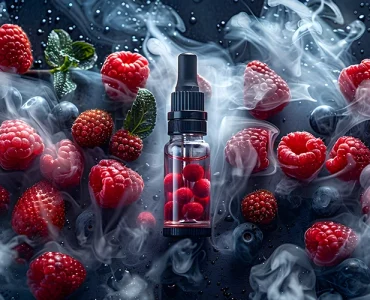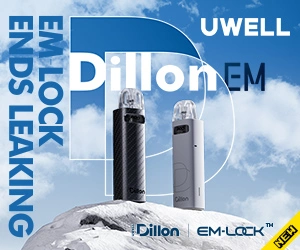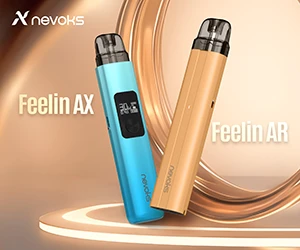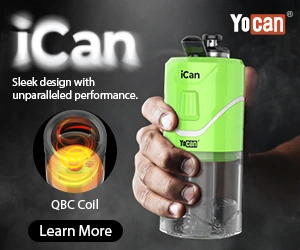Key Takeaways
- Nicotine Pouches are small sachets that commonly contain between 2mg to 20mg of nicotine, along with various ingredients designed to regulate absorption and PH levels.
- The pouches are designed to be placed between the user’s lip and gum for an hour or more. The nicotine contained within the pouch is absorbed through the lining of the mouth and saliva.
- A pack of 20 pouches costs around $5. They are available in numerous flavors, and while the majority of flavors are mint or menthol-based, coffee, cinnamon, and various fruit-inspired flavors are also available.
- Nicotine pouches are considered to be relatively safe compared to smoking when used by adults. Studies suggest that ingesting small amounts of nicotine is no more harmful than absorbing it through patches or other NRTs.
When you start investigating options for quitting smoking, such as vaping, you might also encounter nicotine pouches. These tins, tubs, or packets of tiny, flat, white sachets have become increasingly popular over the past several years, having begun as a very niche tobacco alternative in Northern Europe.
But what exactly are nicotine pouches? How are they made, what’s inside these little pillow-like bags, how does their strength compare to smoking or vaping, and are they safe to use?
We’ve read, researched, and tested these novel nicotine delivery products to answer all those questions and several others you might not have thought of.
What Are Nicotine Pouches?
Nicotine pouches are a relatively new nicotine product. They were first developed in 2000 by Niconovum, a small Swedish company. It was not until Niconovum was bought by the tobacco giant RJ Reynolds (now known as British American Tobacco) in 2009 that they began to grow in popularity outside Scandinavia. 15 billion pouches were sold worldwide in 2023 alone.
Nicotine pouches share several similarities with Snus, a traditional Scandinavian smokeless tobacco product. The main difference is that Snus contains ground tobacco leaves and is available as a loose powder as well as in tea bag-like pouches. Nicotine pouches contain no tobacco and cannot be used in loose powder form.
The pouch part of a nicotine pouch is usually made from organic cellulose (basically plant fibers). The thickness of this material varies and is used to control the absorption speed of the nicotine inside. The nicotine, most commonly nicotine salts, is extracted from tobacco leaves and then mixed with a microcrystalline cellulose powder (another method of controlling absorption rate), gum, solvents, and PH regulators such as sodium carbonate.
The other significant ingredient is food-grade flavoring. A large majority of nicotine pouches use menthol flavors such as spearmint and peppermint, but the past few years have seen an increase in the availability of sweet and fruit flavorings, along with coffee, cinnamon, and licorice, to name just a few.
How Nicotine Pouches Are Used
The thin, flat pouches are designed to be used orally and placed between the user’s lip and gums. The nicotine is drawn through the pouch material by moisture and absorbed through the mouth lining. Some will also be swallowed with your saliva.
Nicotine pouches can be kept in your mouth for an hour or more, after which the pouch can be removed and discarded. To prevent discarded pouches from littering the streets, some manufacturers provide a sealed section in the packaging where used pouches can be stored for disposal later.
How Much Nicotine Is in Each Pouch?
Nicotine pouches are available in a variety of strengths. Low-strength pouches commonly contain 2-4mg of nicotine, 6-8mg is considered medium-high strength, and the strongest pouches available in most countries will be 14-18mg. There are, however, some pouches available in the U.S. and a few other places that contain up to 64mg of nicotine.
Zero-nicotine pouches are also available. These often contain other ingredients designed to provide stimulation, including caffeine, guarana, and ginseng.
A 2022 study by the German Federal Institute of Risk Assessment suggests that around 50% of the nicotine in a pouch will be absorbed into the bloodstream in 60 minutes. In some cases, up to 80% of the nicotine was released from the pouch within the first 5-10 minutes of use.
Nicotine Content Compared to Smoking and Vaping
How do nicotine pouches compare to smoking and vaping, in terms of nicotine delivery? Let’s look at some examples, based on averages of each nicotine product, to try to figure that out.
Note: This is purely a comparison of nicotine delivery, not a comparison of safety or potential risk of harm.
Smoking
The average-strength cigarette will contain 10-12mg of nicotine. That sounds a lot, but only 1-2mg of that nicotine will be absorbed into your bloodstream. The remainder will be lost when you exhale and as the cigarette continues to burn between inhales.
Assuming you were to smoke one or two cigarettes per hour, your nicotine intake would be between 2-4mg/hour. That’s equivalent to using one of the most common 6-8mg nicotine pouches per hour, assuming 50% absorption.
Vaping
Trying to figure out the amount of nicotine delivered by vaping is tricky. The strength of the e-liquid, device efficiency, power level, and vaping style (MTL or DL/RDL) all impact how much nicotine is absorbed.
Previous studies of vape products with strengths of between 4 and 24mg/ml suggest that for every 15 puffs (the estimated equivalent of smoking a cigarette,) between 0.025–0.77 mg of nicotine is absorbed. That study was based on older and less efficient ENDS, so modern vapers likely absorb more, perhaps 0.5 to 1.3mg per 15 puffs, depending on e-liquid strength.
In either case, that’s considerably less than from smoking and less than all but the lowest-strength nicotine pouches.
Related products

NIIN Nicotine Pouches
NIIN nicotine pouches are completely tobacco-free and made with synthetic nicotine. Each can contains 20 nicotine pouches in either 3mg or 6mg strength. There are five flavors available.

Juice Head Nicotine Pouches
Juice Head is well-known for their tasty ejuices and now their flavors are available in the form of nicotine pouches. Each can contains 20 nicotine pouches made with synthetic, zero tobacco nicotine. There are two strengths available: 6mg and 12mg. These pouches are very flavorful and nicely satisfy even the strongest cravings.
Are Nicotine Pouches Safe to Use?
It has to be remembered that nicotine from any source, be that tobacco, vape juice, or pouches, is an addictive toxin. But just as vaping is almost overwhelmingly considered far less harmful than smoking, nicotine pouches are potentially less harmful than either.
There has not been as much research into the potential dangers of using nicotine pouches as there has been into smoking and vaping. Studies that have been undertaken suggest that ingesting small amounts of nicotine through the membranes of the mouth or stomach is relatively safe. It is thought to be no different than absorbing nicotine through pharmaceutical Nicotine Replacement Therapy (NRT) products like Nicorette patches or gum.
Of course, nicotine is more harmful to certain groups than to others and should always be avoided by children and pregnant women. Use by children is of growing concern to opponents of nicotine pouches. The CDC says that in 2023, 1.7% of high school children had used a nicotine pouch. That’s a relatively low number but similar to the amount of teens who smoked cigarettes in the same period.
The fact that pouches are discreet (and easy to hide), available in flavors likely to appeal to children, and have grown massively in availability and popularity in the last few years is undoubtedly also concerning to some.
Possible Side Effects of Using Nic Pouches
There are some known side effects associated with using nicotine pouches. They are generally associated with the relatively fast absorption rate of nicotine and can be experienced with other forms of nicotine delivery, although a few are specific to pouches.
Possible side effects of using nicotine pouches include:
- Irritated Gums
- Sore Mouth
- Dizzyness
- Headaches
- Nausea
- Singultus (Hiccups)
Most of the side effects appear to fade after several days of regular use but may be exacerbated if you smoke alongside the nicotine pouches.
This type of dual-nicotine intake appears to be quite common among users of these pouches, perhaps because slipping a little packet behind your lips does not adequately replace the habit or ritual of smoking a cigarette.
Are Nicotine Pouches Legal?
Nicotine pouches are regulated differently around the world. Some countries have chosen to ban them, others to restrict the available strengths and where they can be sold.
USA
In the US, nicotine pouches are regulated by the FDA and subject to age restrictions, a nicotine health warning, and pre-market assessment. Even though (like vapes) they contain no tobacco, they are classed as a tobacco product because, presumably, the nicotine is derived from tobacco plants.
Canada
Canada initially refused marketing authorization for nicotine pouches, but now allows products under 4mg in strength to be sold in convenience stores, gas stations, and similar outlets. Anything over that strength is considered a prescription drug.
United Kingdom
Nicotine pouches are legally sold in the United Kingdom, but not for long. These potentially useful smoking cessation tools have been swept up, along with disposable vapes, in Prime Minister Rishi Sunak’s drive to create a smoke-free generation. Nicotine pouches will likely be banned before the end of 2024.
Europe
There is an EU-wide ban on the use of Snus (except in Sweden,) but nicotine pouches do not fall under the same rules. While some countries have chosen to ban them, including Germany, they remain widely available in most other EU member states (for now).
Australia and New Zealand
Unsurprisingly, given their strict laws on vapes and heavy taxation of tobacco, both countries have banned the sale and importation of nicotine pouches without a prescription from a medical professional.
How Much Do Nicotine Pouches Cost?
In the United States, 20 nicotine pouches from popular brands like Zyn and Velo cost between $4 and $5. Even very high-strength products rarely cost much more than this. In most states, that is about the same as a pack of 20 cigarettes but more than an equivalent amount (2-3ml) of vape liquid.
In the United Kingdom, a tub or tin of 20 pouches costs around £6.50 (around $8.) This is far cheaper than 20 cigarettes, which cost anywhere from £10 to £18 ($12-$22.) This makes nicotine pouches a significantly lower-cost alternative to smoking in Great Britain (until they are banned).
In Europe, prices can vary widely. Nic pouches are generally around €4 ($4.50) in southern countries like France but cost twice that in the more expensive Scandinavian countries where they originated.
The Bottom Line
Nicotine pouches are a smokeless nicotine product sold in a range of strengths and flavors. They are growing in popularity and availability in many countries, and the range of brands to choose from is increasing. More research is needed, but it seems likely that they are as safe as pharmaceutical NRTs like patches and gum. Yet their use among teenagers is a growing concern for some, and authorities could feel forced to follow the likes of the U.K. and Germany in banning them.










Add comment